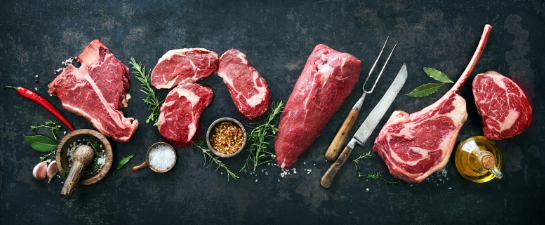In recent years, consumers have become increasingly interested in sustainable food practices, particularly when it comes to meat consumption. One practice that has gained popularity is nose-to-tail butchery, which involves using all parts of an animal, not just the traditional cuts of meat. This practice is now available through butchery delivery services and online butcher shops specialising in quality meat, such as free range chicken, Zealand meat, and NZ beef.
Benefits of Nose-to-Tail Butchery:
Nose-to-tail butchery maximises meat usage, reducing waste and making the most out of the animal. This is now especially important in a world where food waste is a significant problem. Additionally, this practice promotes sustainability by using all parts of the animal, not just the most popular cuts, and can help reduce the environmental impact of meat production by decreasing the demand for mass-produced, factory-farmed meat.
One of the benefits of nose-to-tail butchery is that it can improve the flavour and nutrition of meals. Different parts of the animal have unique textures and flavours, and using all parts of the animal can add variety and depth to meals. Quality meat and fresh meat delivered through meat box services can ensure that lesser-known cuts of meat, often rich in nutrients and minerals not found in the more popular cuts, are accessible to consumers.
Despite its benefits, nose-to-tail butchery has faced challenges and misconceptions. However, with the rise of online butcher shops and meat delivery services, consumers have easier access to this sustainable and flavorful practice and great quality meat.
The Rise of Nose-to-Tail Butchery:
The rise of nose-to-tail butchery can be attributed to a growing interest in sustainable food practices and a desire to reduce waste. With the help of online butcher shops and meat delivery services, consumers now have access to quality meat, including New Zealand meat and lamb, delivered directly to their doors through meat box services.
Advancements in butchery techniques and the popularity of food culture have also helped bring this practice to the mainstream. Many online butcher shops and meat delivery services now offer a wide selection of meat, from popular cuts to lesser-known ones, promoting the use of all parts of the animal. Great service, delivery dates, and rural addresses are considerations for online meat purchases.
Challenges and Misconceptions:
Restaurants and chefs have played a significant role in promoting nose-to-tail butchery, featuring dishes that showcase the versatility and unique flavours of the practice. However, despite its benefits, there are still challenges and misconceptions surrounding nose-to-tail butchery. One of the biggest challenges is cultural taboos and resistance to eating certain parts of animals. This is where education and awareness surrounding the practice can play a crucial role in helping consumers understand the benefits and how to incorporate it into their daily lives.
Overall, nose-to-tail butchery is a sustainable and flavorful practice that offers numerous benefits to consumers and the environment. With the rise of online butcher shops and meat delivery services, quality meat and fresh meat delivered through meat box services are now more accessible than ever before, making it easier for consumers to support sustainable food practices.
Nose-to-Tail Butchery in Practice:
Nose-to-tail butchery involves utilising all parts of the animal, not just the traditional cuts of meat. This means using everything from the head to the hooves and tail. While some may be hesitant to try less familiar cuts of meat, many of these cuts are flavorful and nutritious and can be cooked in various ways.
One of the most important aspects of nose-to-tail butchery is learning how to use different cuts of meat. For example, the shank and the shoulder are great for braising, while the tongue can be boiled and sliced for sandwiches or tacos. The heart can be slow-cooked or grilled, while the liver can be pan-seared or turned into a pâté, enough o make your mouth water.
Another key aspect of nose-to-tail butchery is meal planning and budgeting. By utilising all parts of the animal, consumers can save money while still enjoying high-quality meat. This practice also reduces food waste and promotes sustainability.
Environmental Impact of Nose-to-Tail Butchery:
One of the main benefits of nose-to-tail butchery is its positive impact on the environment. By utilising all parts of the animal, this practice helps reduce food waste and decrease the demand for mass-produced, factory-farmed meat. In turn, this reduces meat production's environmental impact by lowering carbon emissions and promoting biodiversity and ecosystem health.
Additionally, nose-to-tail butchery supports sustainable meat production by promoting local farming and ethical animal treatment. This practice encourages consumers to buy meat from local farmers who prioritise sustainable, humane practices over industrial farming methods.
Future of Nose-to-Tail Butchery:
The future of nose-to-tail butchery looks promising, with more and more consumers expressing interest in sustainable meat consumption. Many restaurants and chefs are embracing this practice and featuring nose-to-tail dishes on their menus, showcasing the versatility and unique flavours of this approach to meat consumption.
Advancements in meat production technology and butchery techniques also present exciting opportunities for the future of nose-to-tail butchery. For example, there are now methods for turning meat scraps and offcuts into high-quality, value-added products like sausage and charcuterie.
As we become more conscious of the environmental impact of our food choices, a nose-to-tail butchery is poised to become an increasingly popular approach to meat consumption. By supporting local farmers and butchers who practice sustainable meat production and learning how to use different cuts of meat, consumers can help promote a more sustainable and responsible approach to meat consumption.
Frequently Asked Questions
What is nose-to-tail butchery?
A1: Nose-to-tail butchery is a sustainable meat consumption practice that utilises all parts of the animal, not just the traditional cuts of meat.
Why is nose-to-tail butchery important?
Nose-to-tail butchery is important because it maximises meat usage, promotes sustainability, improves flavour and nutrition, and supports local farmers.
What are some challenges and misconceptions about a nose-to-tail online butchery shop?
Some challenges and misconceptions include cultural taboos and resistance, education and awareness, and cost and accessibility.
How can I practice nose-to-tail butchery in my daily life?
You can practice nose-to-tail butchery by trying different cuts of meat, learning how to cook them, and supporting local farmers and butchers who practice sustainable meat production.
In conclusion, nose-to-tail butchery is an important practice that offers numerous benefits for consumers and the environment. By utilising all parts of the animal, this practice helps reduce food waste, promote sustainability, and encourage ethical animal treatment. While there may be challenges and misconceptions surrounding this practice, its growing popularity and availability suggest that it has a promising future in sustainable meats.
By learning how to use different cuts of meat and incorporating nose-to-tail, an online butcher shop into our meal planning and budgeting, we can save money while still enjoying high-quality meat delivered to your door at a great price. Additionally, supporting local farmers and butchers who practice sustainable meat production can help promote a more responsible and sustainable approach to meat consumption.








Leave a comment (all fields required)